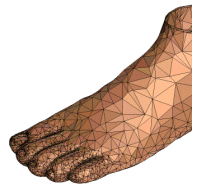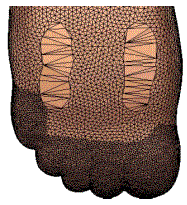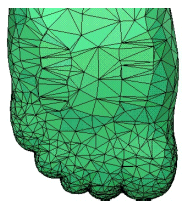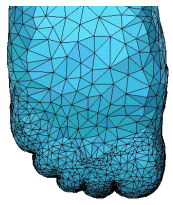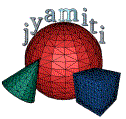
1. In many cases the reconstructed model contains too many elements (triangles, edges, vertices) to be amenable for further processing. A widely used method decimates the model by contracting edges with their incident triangles. We study this edge contraction process with the goal that the topology of the model is preserved. This guarantee can be extended to two dimensional simplicial complexes and to three dimensional manifolds with our method. No prior method can guarantee this. This is a joint work with Herbert Edelsbrunner based on which Raindrop Geomagic has developed the decimator software.
Sample Decimation
2. In another approach we decimate the sample before reconstructing a surface out of it. This has the advantage of automatic topology and feature preservations over the model simplification method. Also, one does not need to worry about self intersection. After decimating the sample we employ our Cocone algorithm to reconstruct the surface.
![]() Topology preserving edge contraction.
Topology preserving edge contraction.
T. K. Dey, H. Edelsbrunner, S. Guha and D. Nekhayev.
Topology
preserving edge contraction. . Publications
de l' Institut Mathematique (Beograd), Vol. 60 (80), 1999. Aslo, Technical
Report RGI-Tech-98-018, Raindrop geomagic Inc., Research Triangle Park,
North Carolina, 1998.
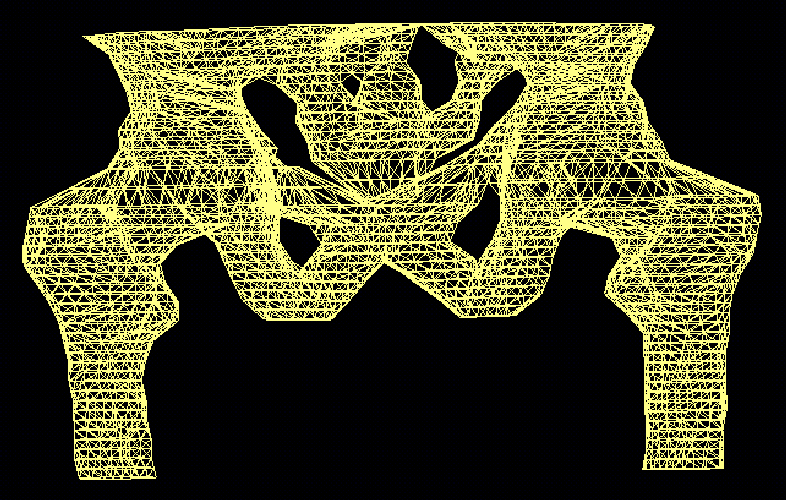 |
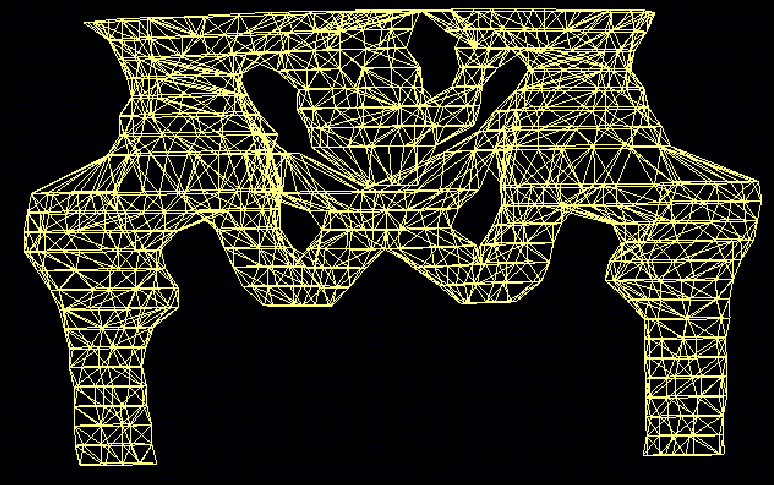 |
![]() Decimating Sample.
Decimating Sample.
T. K. Dey, J. Giesen and J. Hudson. Decimating samples for mesh simplification. Proc. 13th Canadian Conference on Computational Geometry, (2001), 85--88
T. K. Dey, J. Giesen, S. Goswami, J. Hudson,
R. Wenger, W. Zhao. Undersampling
and oversampling in sample based shape modeling. Proc. IEEE Visualization,
(2001), 83--90.
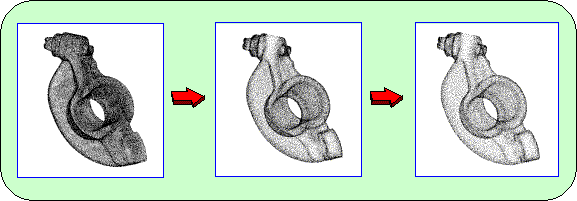
Decimation
of samples at different levels
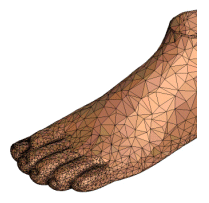 |
|
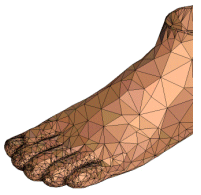 |
For Shuffle see
T. K. Dey, J. Giesen and J. Hudson. Sample
shuffling for quality hierarchic surface meshing. Proc. 10th International
Meshing Roundatble Conference. (2001), 143--154.
|
|
|
|
|
Foot without any decimation (skinny triangles around two sparse regions). Approx. 36000 triangles. |
Output of Decimate (long skinny triangles still remain). Approx. 4000 triangles. |
Output of Shuffle (skinny triangles are smoothed out nicely). Approx. 4000 triangles. |
